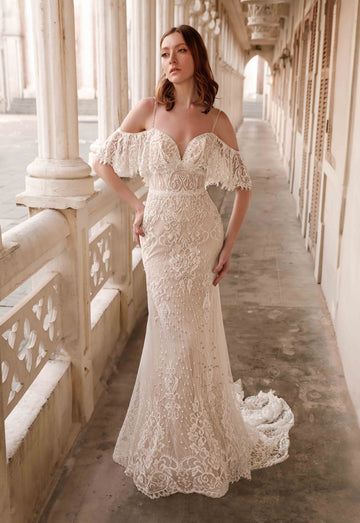Understanding Market Trends Impacting Wedding Dress Prices
Understanding Market Trends Impacting Wedding Dress Prices
Exploring the Influence of Market Trends on Wedding Dress Prices
Weddings are among the most significant life events, and choosing the perfect wedding dress is crucial for many brides. However, the price of wedding dresses can vary widely based on numerous factors influenced by market trends. In this article, we will explore how different market trends impact wedding dress prices, providing insights for brides-to-be, wedding planners, and industry professionals.
Current Market Overview
The wedding dress market has experienced significant changes in recent years. Economic conditions, fashion trends, and consumer preferences all play vital roles in determining prices. The global pandemic also shifted many trends, creating a unique landscape for wedding attire. As we navigate through these complexities, let’s break down some key factors influencing wedding dress prices.
1. Economic Conditions
Economic stability directly affects consumer spending. When the economy is booming, individuals are likely to spend more on luxury items, including wedding dresses. Conversely, during economic downturns, price sensitivity increases. Recent years have seen fluctuating economic conditions that have led to:
| Economic Situation | Impact on Wedding Dress Prices |
| Economic Growth | Higher demand for premium and designer dresses, increasing prices |
| Recession | Increased focus on budget-friendly options, lower overall prices |
2. Fashion Trends
Fashion trends evolve every season, influenced by designers' creativity, celebrity weddings, and popular culture. Designers often introduce new collections that set style standards, creating a ripple effect on prices. Following trending styles often leads to:
- Higher Prices: Limited edition or designer wedding dresses can have inflated prices due to exclusivity.
- Affordable Alternatives: As trends change, many brands provide affordable options that mimic high-end designs.
3. Supply Chain Challenges
Recent global events have disrupted supply chains, affecting the availability of fabrics and materials used in wedding dresses. This has led to:
- Increased Costs: Shortages of materials may lead to higher production costs, reflecting on retail prices.
- Delay in Production: Longer wait times for dress delivery can discourage brides from ordering custom-made gowns.

Understanding Consumer Preferences
Today's brides are more informed and discerning than ever. Social media, online reviews, and blogs contribute to their decision-making process. Brides are influenced by:
1. Sustainability and Ethical Choices
An increasing number of brides are prioritizing sustainable and ethical practices when choosing their wedding dresses. This trend leads to:
- Eco-friendly Materials: Dresses made from organic or recycled fabrics can have varying prices based on sourcing.
- Investment in Quality: Many consumers are willing to pay a premium for ethically-produced gowns.
2. Customization and Personalization
More brides are seeking personalized dresses that reflect their unique style. Customization options can enhance the bridal experience but often come with additional costs. Key considerations include:
| Customization Feature | Price Impact |
| Custom Measurements | Increased labor and material costs |
| Unique Embellishments | Significant price increase based on design complexity |
The Role of Technology
Technology has revolutionized how brides shop for wedding dresses. Online retailers, virtual try-ons, and 3D printing are beginning to play a role in the industry:
1. Online Shopping Trends
As online shopping becomes the norm, many brides opt for cost-effective options from e-commerce platforms. This shift offers affordability but raises concerns about:
- Fit and Quality: Buying unseen could result in issues with sizing and fabric quality.
- Brand Authenticity: Brides often hesitate to buy from lesser-known brands due to fears about quality.
2. Virtual Try-ons
Technological advancements have made virtual try-on experiences more accessible. Brides can virtually fit dresses before purchase, driving competition and resulting in:
- Lower Prices: Increased competition may lead to reduced prices among retailers.
- More Special Offers: Brands may provide discounts to attract virtual shoppers.
Regional Differences in Wedding Dress Pricing
Wedding dress prices can also vary widely depending on geographic location. Market trends, local demand, and regional economies all influence pricing. Here’s an overview of pricing trends across different regions:
| Region | Average Wedding Dress Price (USD) |
| North America | $1,500 - $3,000 |
| Europe | $1,200 - $2,500 |
| Asia | $800 - $2,000 |
Conclusion: Navigating the Wedding Dress Market
Understanding the market trends impacting wedding dress prices is essential for brides and industry professionals alike. Economic conditions, changing fashion trends, supply chain challenges, and evolving consumer preferences all play a significant role. While brides must navigate the complexities of these variables, knowing market trends can empower them to make informed decisions.
Key Takeaways:
- Stay informed about economic conditions and how they may affect spending on wedding dresses.
- Follow current fashion trends to find budget-friendly alternatives to expensive designer dresses.
- Consider customization options carefully, weighing the emotional value against potential costs.
- Be aware of regional pricing differences, as they can offer insights into potential savings or splurges.
Ultimately, the wedding dress should reflect the bride's unique style while fitting within her budget. By understanding the market trends affecting wedding dress prices, brides can find their dream gown without overspending.
